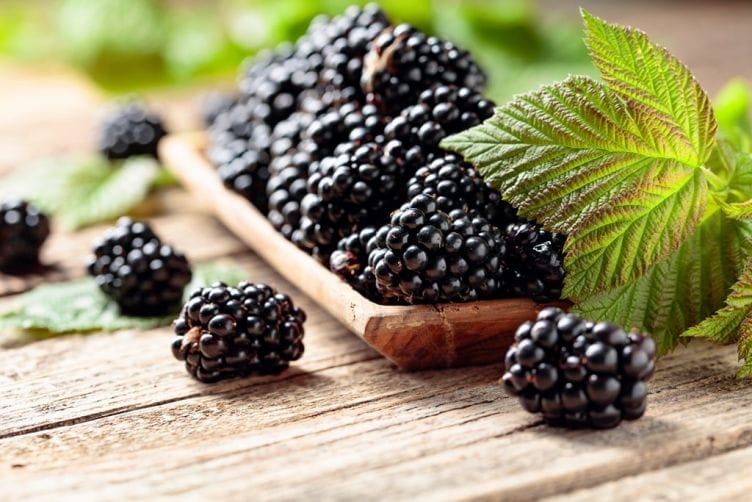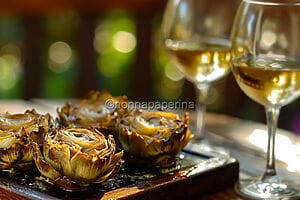Blackberry

The properties of the blackberry
Due to their flavour and adaptability, blackberries are highly valued fruits. It can produce fruit from two very similar but different species: the bramble tree and the mulberry tree. For example, the bramble has more thorns and a more intricate structure, to the point of being used as a hedge. The mulberry has fewer thorns and can also develop flowers. Regardless of the plant, blackberries are naturally harvested between July and September.
The fruits boast good nutritional values. With a moderate caloric intake, equal to 52 kcal per 100 grammes, they provide good quantities of vitamin A and C. They are also rich in mineral salts such as potassium, iron, calcium, and phosphorus. They also contain other precious substances, such as anthocyanins and flavonoids, which perform a fundamental antioxidant function. And lastly, they have folic acid, which is a very helpful ingredient when pregnant.
The different varieties
Apart from the difference between mulberry and blackberry, which usually results in greater sweetness than the former, numerous varieties are worth mentioning. Below are some of the most famous, among the “garden” or vegetable garden ones.
- Chester. The fruits are medium-sized and dark in colour, and the plant is thorn-free. They are harvested during the central months of summer.
- Loch Ness. Variety with very few thorns, it offers intensely black fruits with a rather strong flavour. It is among the rare types that can withstand low temperatures quite well.
- Thornfree. It is characterised by distinctly sweet fruits. It is a very late variety, with dark purple fruits.
How to use blackberries in cooking
As I have already mentioned, blackberries are very versatile fruits. Obviously, they are ideal for raw consumption as a table fruit. However, they are suitable for many preparations, in the vast majority of cases, in the confectionery sector. They can act as fillings for cakes and enhance fruit cheesecakes. They can also be transformed into jam and enjoyed for breakfast or in delicious tarts. Some borderline, “almost” savoury recipes are worth mentioning, such as the fruit gratin.
Obviously, blackberries can serve as the main ingredient in smoothies, juices, and milkshakes. It can be used in the preparation of cocktails or granitas. To put it briefly, there are lots of options that can improve the results. Below, you will find a selection of recipes with blackberries!
Delicious recipes with these berries
The blackberry proves to be an excellent ally in the kitchen, even when you intend to prepare some tasty recipes. Here are some ideas that struck me the most:
Dark chocolate and blackberry baskets. These are incredibly lovely and tasty candies that are perfect to display and eat on special occasions. The dark chocolate acts as a “container” and hosts a very fluid filling based on Greek yoghurt and blackberry jam. The garnish, however, is entrusted to fresh blackberries.
Frozen yoghurt with blackberries and peaches. It is a very unique dessert and somehow similar to popsicles. This time, the blackberries and yoghurt are mixed together and layered to create the ice lolly’s top layer. The second layer, however, is made with peaches.
Corn biscuits with blackberry jam. They are biscuits similar to a bull’s eye but are made with corn flour and shaped like a heart. The filling is made of delicious blackberry jam.
Blackberry, blueberry, and sage smoothie. It’s a simple smoothie that offers a truly perfect combination. Sage contributes its traditional aromatic flavour, while blackberries and blueberries ensure sweetness and a slight acidity.
What are the benefits of blackberries?
Blackberries are notable for having a superior nutritional profile, as we have seen. Here are a few advantages that blackberries provide:
- They support the immune system. The richness of vitamin C, which strengthens the body’s defences, and the presence of a few crucial trace elements deserve the credit.
- They help prevent cancer. The term “antioxidant substances” refers to the existence of compounds such as anthocyanins, which are particularly abundant in blackberries and regulate cell turnover.
- They facilitate digestion. Blackberries, like the majority of plant-based foods, are high in fibre, which facilitates quick and efficient digestion.
- They support cognitive functions. Blackberries’ high antioxidant content helps to maintain cognitive abilities by delaying the ageing of neural cells.
Do blackberries have any contraindications?
Although blackberries are a healthy fruit, you should consume them in moderation. In fact, if you eat too many blackberries, you may develop intestinal diseases like diarrhoea or discomfort. These effects, in reality, concern all foods of plant origin that are characterised by a certain abundance of fibre.
For this reason, particular attention should be paid by those who have problems with the digestive system, and in particular those who suffer from irritable bowel syndrome.
Another category of people who should look at blackberries with extreme caution are those who suffer from diverticulosis. In fact, blackberry seeds could further stress the intestinal mucosa, which is already subject to injury.
At this point, a question arises spontaneously: can blackberries also trigger some form of allergy? The answer is yes, but in very rare cases. However, the allergen is found in salicylic acid, a very abundant substance in the fruit. The symptoms are always the same and involve both the skin and the digestive system: skin rashes, itching, wheals, vomiting, diarrhoea, etc.
Some advice on growing blackberries
Blackberries are a wonderful and adaptable fruit, and the plant has a pleasing aesthetic impact, so many people desire to grow them. Thankfully, blackberry cultivation is rather easy and doesn’t take much work. Actually, the blackberry plant is highly resistant to parasitic activity and doesn’t require special attention.
Regardless, the recommendation is to prepare supports in a manner akin to that of grapes. In actuality, brambles often grow erratically and obstruct other crops.
There are very few requirements in terms of the terrain. The fact that brambles grow practically anywhere, even by the side of the road, is no coincidence. It is obvious that you don’t have to put in a lot of work when it comes to watering.
However, regular pruning of brambles is important. Pruning generally follows fruit harvesting and requires good shears. The fruiting shoots must be cut at the base, while the more imposing branches must be kept up to two metres in height.


















